Lantern
An MVP jobs platform for remote developers

Role & Duration:
User Research, Product Strategy, UX/UI Design, Information Architecture, Prototyping, and Usability Testing 6 weeks
About Lantern:
"1 million computer programming jobs in the US are expected to remain unfilled by 2020." Lantern is an early-stage startup with the mission to connect talented software developers from all over the world to companies who are short-staffed with technical talent. The founder was looking for a web MVP prototype to test with a wider audience.
Business Goals:
- Increase of job application completion rate
- Increase of click-through rate on job listings
The Problem
Developers find job platforms clunky and outdated
Generative research showed that developers rarely spend time on traditional job boards. Additionally, developers applying to highly variant positions can rarely reuse a resume or cover letter. This causes many to give up halfway through the application process.
Design Goal
An MVP Job Platform In 6 Weeks
The goal for the project was to design an MVP jobs platform for talented developers to search and apply for jobs. I was tasked with delivering a high-fidelity web prototype within 6 weeks.
Primary goals were:
- Encourage developers to certify their technical skills
- Streamline the process to search & apply for jobs
The Solution
An easier way to find your dream job
Apply to jobs with a single click
Take the hassle out of the job search. No resume or cover letter needed.
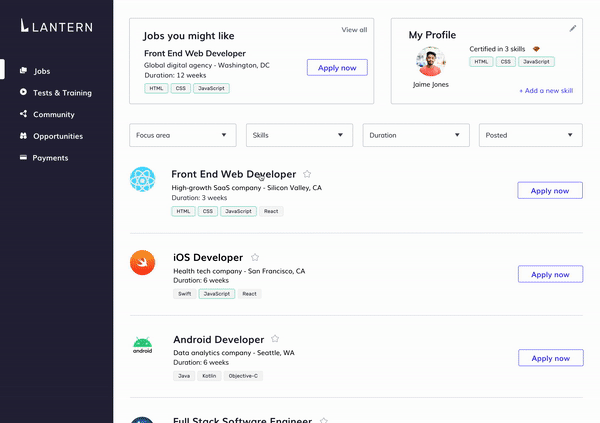
Job search with developers in mind
Technical skill tags and language logos make searching for jobs a breeze. Quickly find the job you love based on the main tech stack.
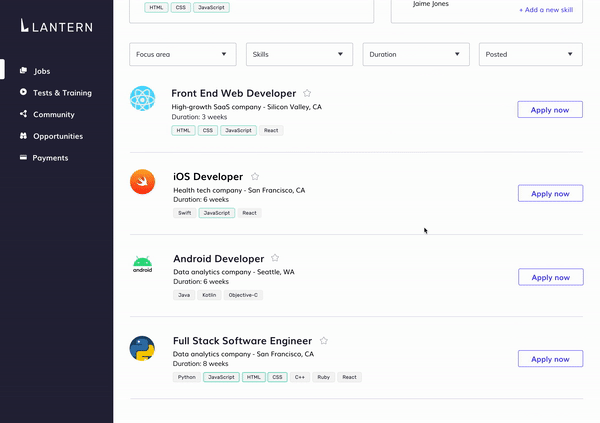
A platform that evolves with the user
From initial login and beyond, the Lantern platform is tailored to evolve with you.
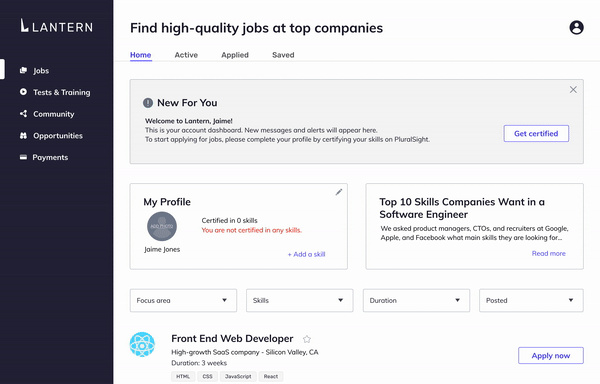
Industry & Competitive Research
Software developers screen jobs by technology
I analyzed competitors and analogous platforms in the US, Asian, and African markets to understand how developers searched and applied for jobs.

I grouped my research findings into the 3 most important areas of a job platform:
Job Search
Software developers screened for jobs using technology tags to see if the position was interesting and if they fit the description.
Application & Profile
Applications only asked for the most necessary information.
Users expect to complete the profile process at their own pace.
Home Dashboard
Dashboards employed visual nudges to guide the user throughout each step of the job search process
Homepage Iterations
How will the homepage address user goals?
After completing their technical profile, the user is taken to the homepage dashboard via a welcome email. Lantern developers have to certify their technical skills before applying to jobs on the platform. For Lantern's homepage dashboard, I thought about the following questions:
- How will developers know what to do next?
- How do I streamline the search and apply process?
- How do I encourage developers to return to the platform?
Dashboard v1: Utilizing a progress bar and task list to show onboarding steps
In early iterations, I focused on a progress bar and task list to encourage developers to certify their skills - a necessary step before applying to jobs.
I incorporated a job statistics card into the homepage dashboard to help developers track their progress and reinforce the value of the Lantern platform.
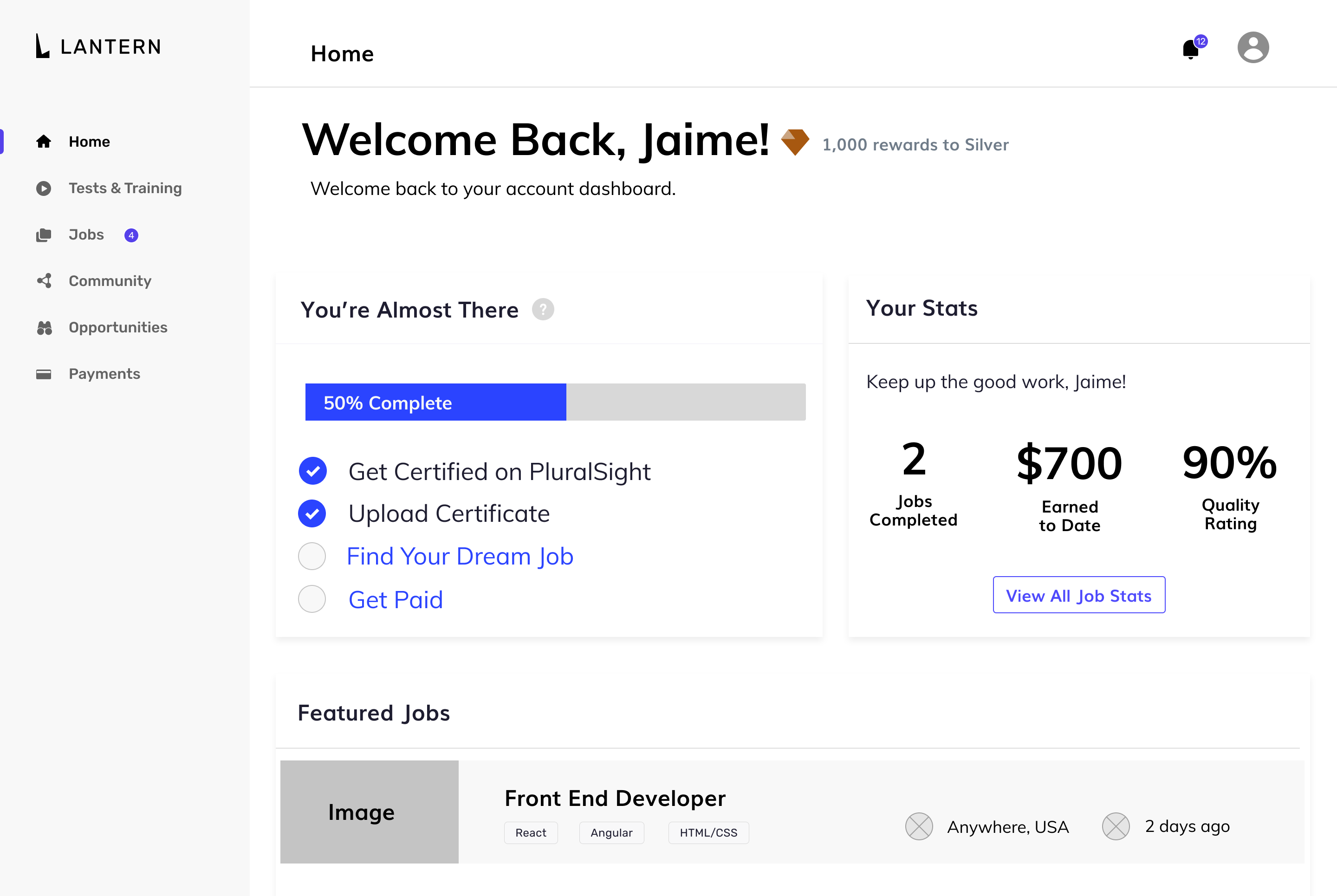
Dashboard v2: Integrating job search into the homepage
I iterated on how the dashboard would address user needs from initial login and beyond. Further brainstorming revealed two problems:
- First, the homepage dashboard wasn't actionable enough for a brand new user.
- Second (and most importantly), users would almost always click away from our homepage to Lantern's main feature, the job search page, so I integrated that directly into the homepage.
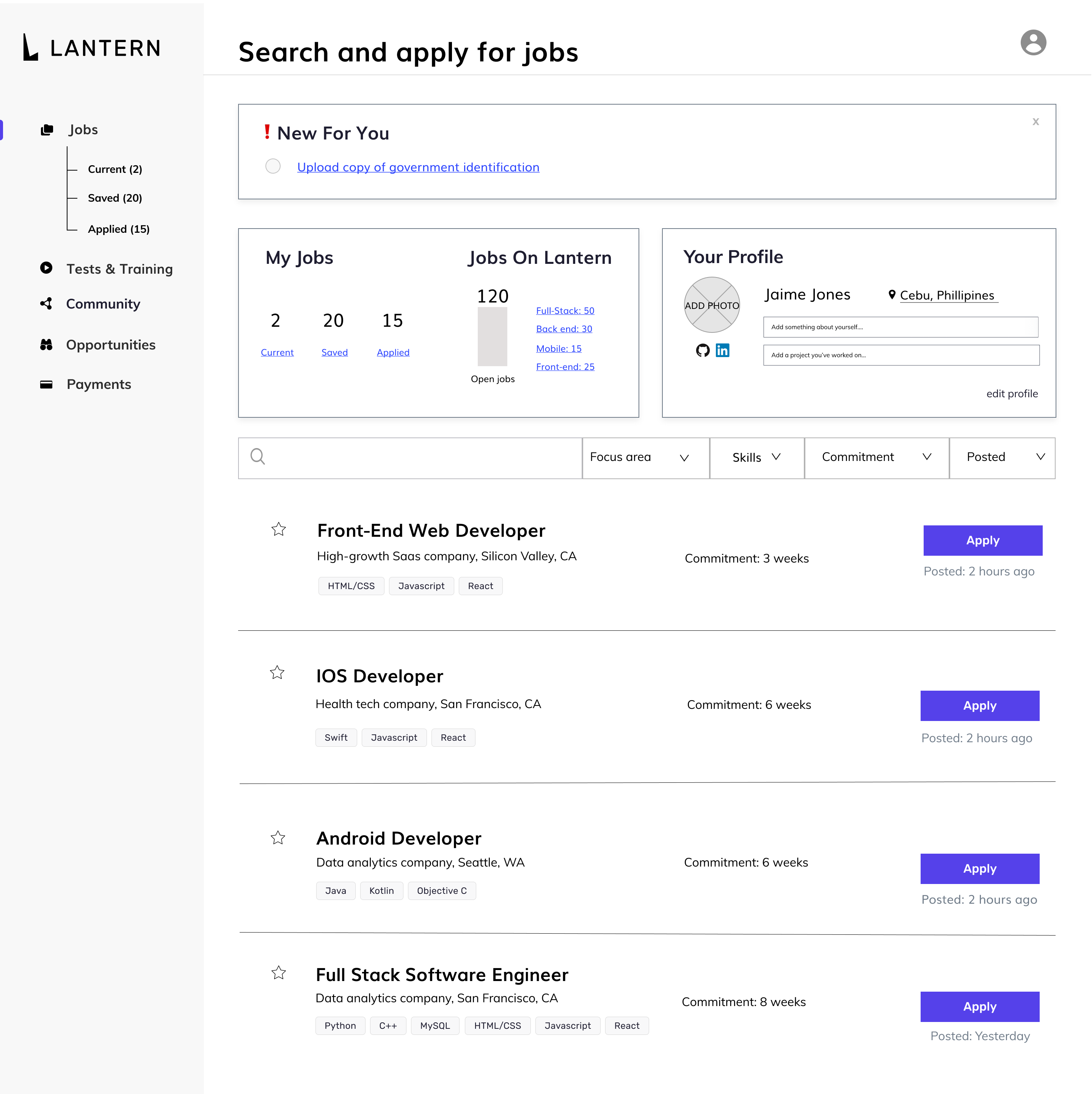
The new jobs dashboard utilized card components to house content such as:
- New For You: Onboarding instructions or platform messages
- Jobs You Might Like: Personalized job recommendations based on the user's profile and activity
- My Profile: At a glance profile and skill certification information
Dashboard v3 (final): Creating the best experience for users to find the latest jobs
Although v2 was an improvement, I realized the text-heavy homepage wasn't easily scannable. Knowing that users' eyes are drawn to images, I realized I had to overcome the constraint of not using company logos.
Based on user research, I decided to use technology logos to instantly convey information to the user.
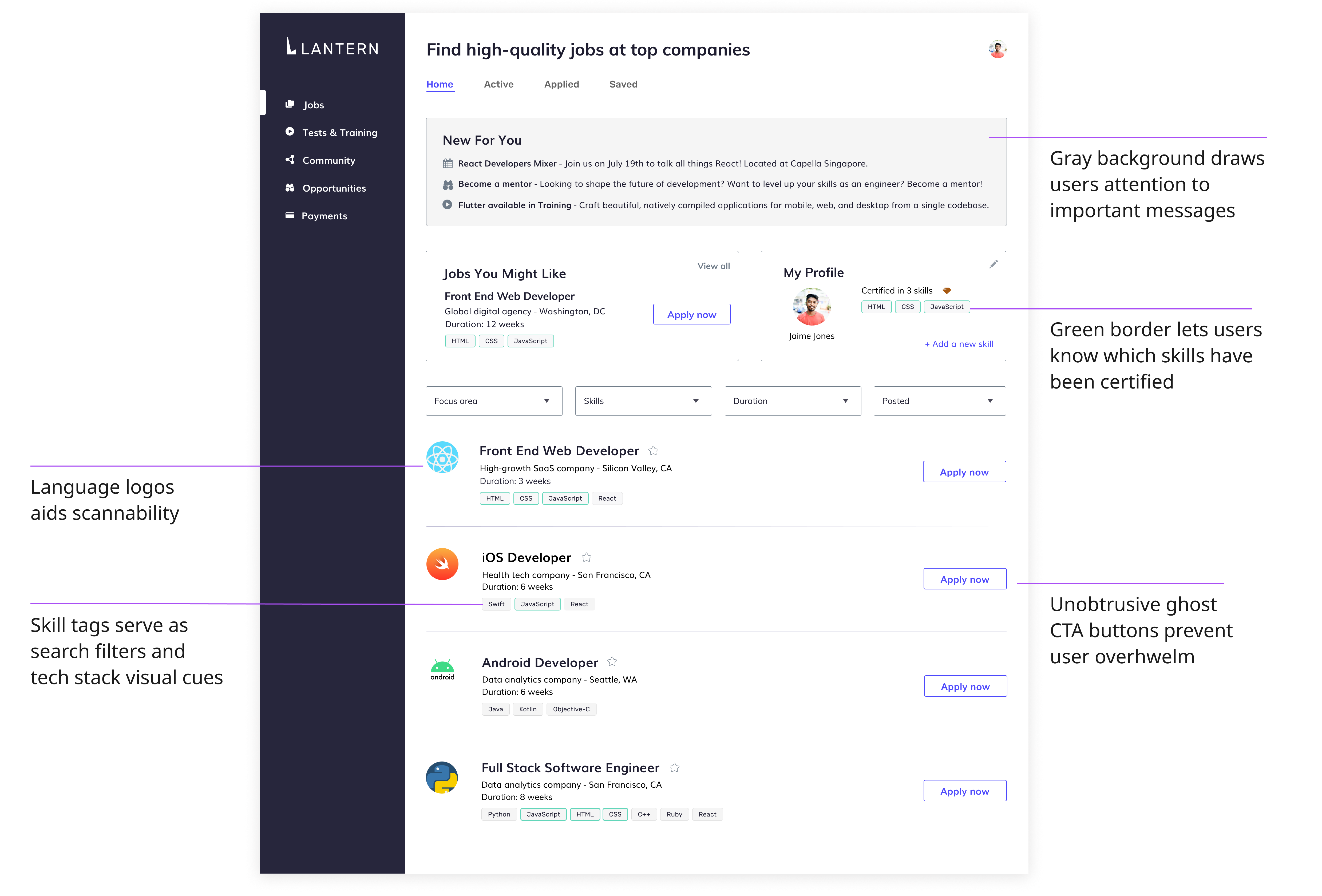
Validation Testing
Accounting for user expectations
The final prototype was tested on 5 junior developers in San Francisco. I found that 5/5 developers expected to upload their resume and cover letter before submitting their application.
Since this lack of context could discourage users from applying, I knew it was important to update.
Application Modal - Before Validation
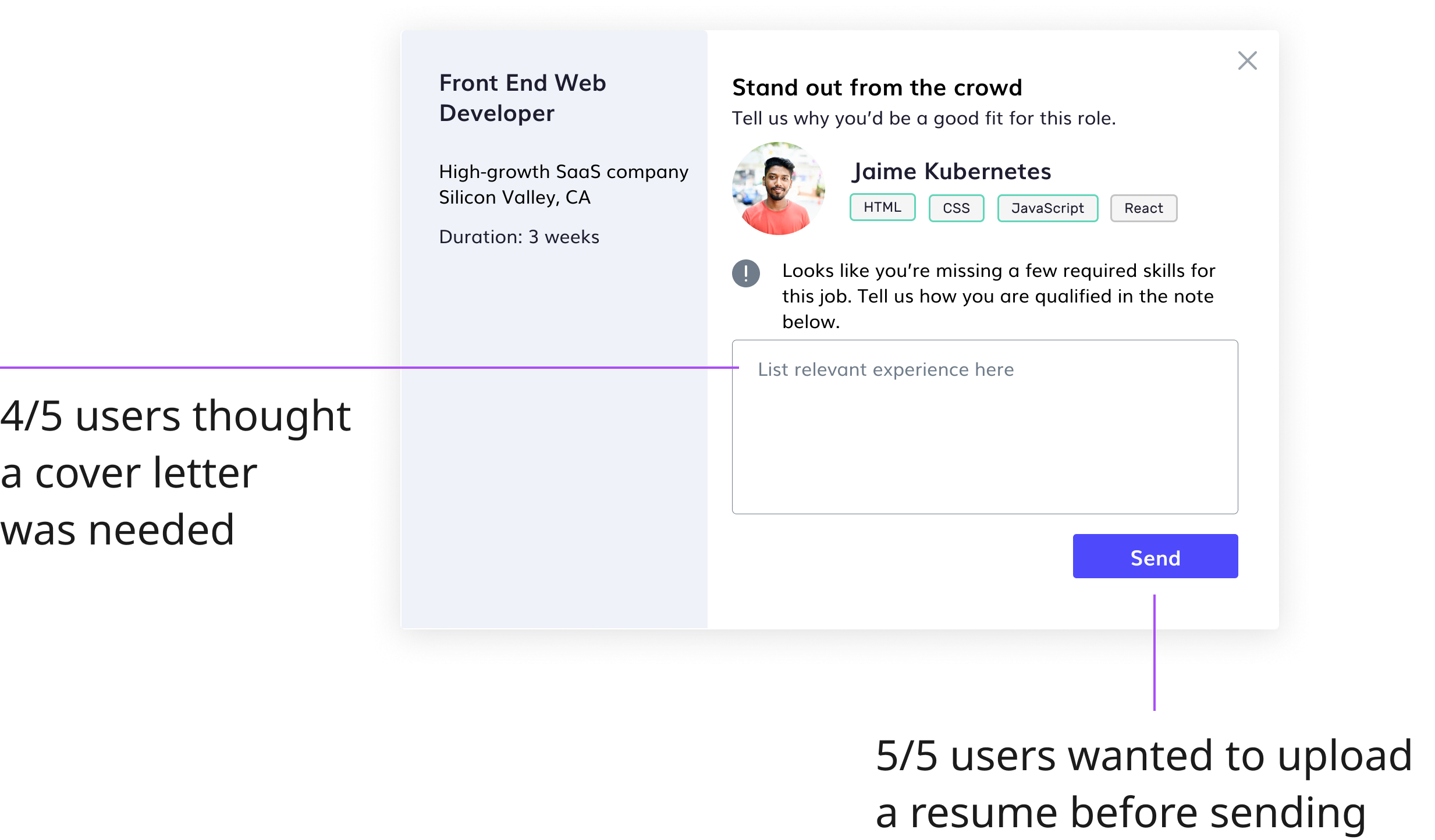
Application Modal - After Validation

Final Prototype
A job platform that fits developers' needs
Take the hassle out of the job search. No resume or cover letter needed.
Final Outcome
Evaluating success
The Lantern team is currently working to implement the final designs. I will determine if the MVP is a success based on the following metrics:
Metrics of Success:
- Increase in job application completion rate
- Increase in CTR on job listings
Final Thoughts
There's no place like a home dashboard
I learned that dashboards should provide users with easy paths to the most relevant information. Throughout the design process, I thought about how each dashboard decision was relevant to the user's initial goal and how their goals and needs could evolve over time.
MVP: A balancing act of the present and future
Deciding which features are needed for an MVP jobs platform required a careful balance of present and future planning. I worked closely with the founder to better understand how design decisions would impact future plans, immediate business needs, and technical level of effort.